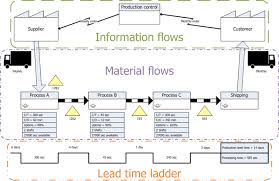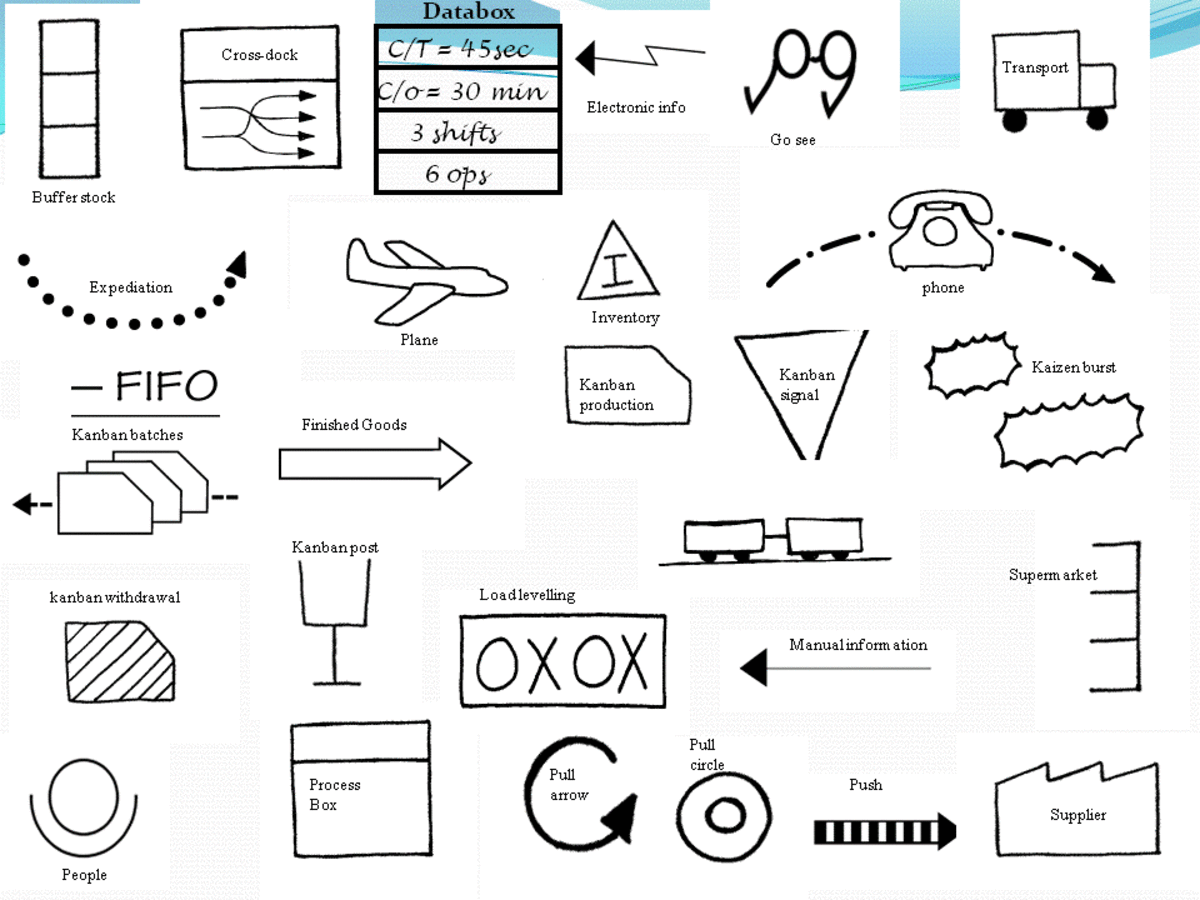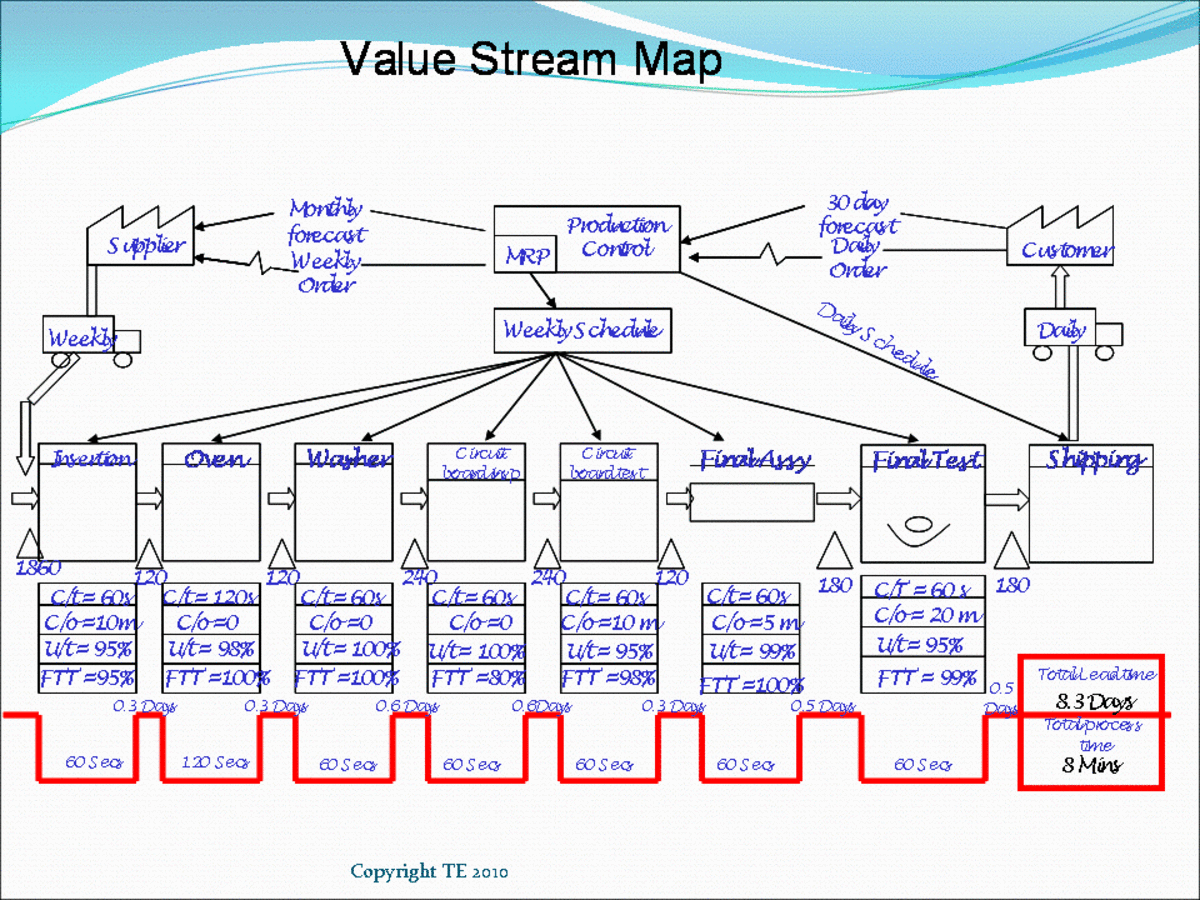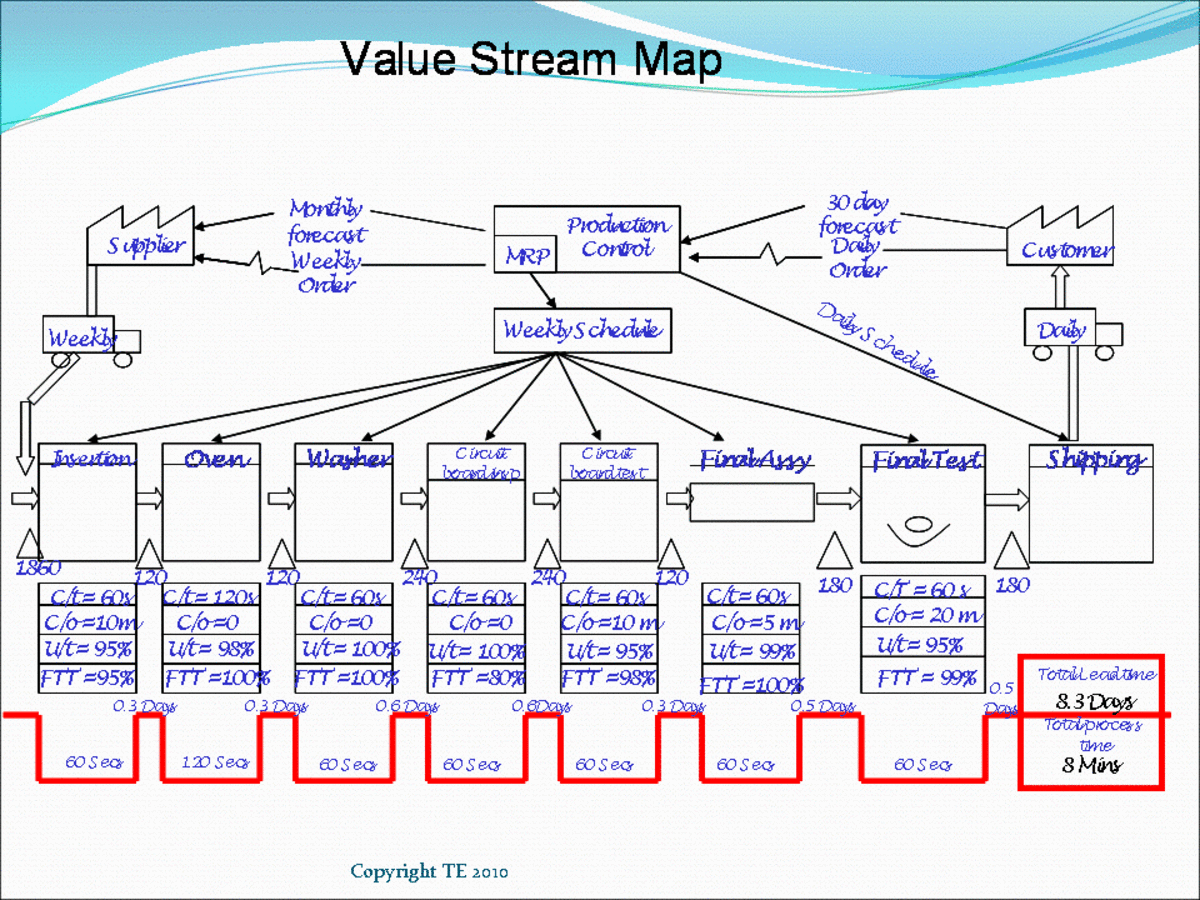VALUE STREAM: Mapping Processes Using Value Stream Maps & Symbols

What is Value Stream Mapping?
A value stream is all the actions that a company undertakes so as to deliver a product or service to the customer. These actions encompass every facet of the organisation, irrespective of whether or not they directly add value to the product or service. Since a company may have many products that it offers its customers, there are usually many value streams within the same organisation.
There are many complex interactions between the value streams which eventually lead to loss of customer visibility. The many functions appear to operate at cross-purposes with each other, often duplicating roles which leads to internal conflict. This conflict between value streams within an organisation makes it difficult for it to perform its core function of customer satisfaction in an efficient and effective manner. The costs to an organisation are usually higher than they should be because of these conflicts.
When value streams within an organisation are clarified, quality and delivery goes up while costs are lowered. This increases the profitability of a business without doing Business Process Re-engineering of any kind. The value stream paradigm is a progressive process that starts with mapping and eventually results in a new business that is organized according to the value creating steps that are necessary for a customer order fulfillment.
Value Stream Mapping Definition
Value Stream Mapping is the use of pictorial devices to show all the inter-related actions within a value stream with an aim of reducing or eliminating wasteful activities. Many companies try to minimise their costs by looking at single points within their value stream. This approach often leads to sub-optimisation which is not reflected in any gains to the system as a whole. What can organisations do to ensure that there is a tangible improvement in their bottom line when they under take cost saving measures? The best way is to approach problems from a systemic point of view so that any improvement can have a major impact.
The importance of using Value Stream Maps for charting processes is:
- It is done where value for the customer is created
- Helps in identifying the flow of value through-out the organisation
- Identifies where the wasteful activities so that planning for improvement is easy
- Profits normally go up after the waste has been identified and eliminated or reduced
- Focus on customer centric activities improves delivery and quality
By focusing on the value stream, the whole system is optimised as opposed to a single process. Using the rolled throughput principle, all the important processes are improved so as to achieve an aggregate improvement of the system. As an example, we take three processes A, B and C which contribute to the output D. As an equation, this would be expressed as follows: D = A x B x C. The value of the output (D) is dependent on all the input parameters. If for example process A,B and C are operating at 100%, 90% and 92% respectively, the rolled through-put will be only 82.8%!

The Process
The first thing one needs to do when undertaking the mapping process is to take a walk through the processes. A helpful imagery to use is that you have to staple yourself to a customer order so that you can see how the order is fulfilled across the organization. An intimate understanding of the processes as they are-not as they should be- is key for an accurate mapping process because the observations are used for improvement purposes.
Before you start the process, there are a few prerequisite that have to be in place:
- Management commitment and involvement in the mapping process
- Cross-functional team with process owners who have a commitment to change
- An open mind to see things as they really are and not as they should be
- A pencil
- A paper
In short, what is needed is a team of people committed to changing their organization. Simple tools like a pencil and paper show that the value stream mapping process is more of an observational than analytical process. Just keep your senses open and map what is really happening. It's that simple!
The Process Walk
This must start with the customer order entry function. In most cases this is the sales office where a customer first lands. You follow the order from the sales to the shop floor in the case of a manufacturing plant. At the shop floor, the walk should be from the dispatch area which is closest to the customer. In essence the flow of the mapping process should be upstream, in reverse of the normal flow of product. By observing the process backwards, a clear picture will emerge on how everything works together to deliver a finished product.
Value Stream Symbols
In order to record the process in a clear and concise manner, there are a number of symbols which are used. These are standard representations which enable one to capture very large process flows in a single A4 paper. The four broad categories of symbols used for the mapping exercise are:
- Process
- Material
- Information
- General
- Extended Value Stream
Organising a Company into Value Streams
As waste is reduced from production processes, order taking and product development the next logical step to sustain the gains is to re-organize the business into value streams. This is done through:
- Identifying product families which have a similar production flow
- Selecting the value streams that represent a significant portion of the business
- Creating a production flow matrix where the products are grouped by the machines or work centres that they share
- Reducing the machines or processes that are shared by many value stream
A typical value stream should have between 25-150 people and these should all be supporting the production process. As stated above, you should minimize the number of machines that are shared between value streams because they impede upon the flow of material. Such shared machines or processes are known as monuments because in many cases they are very large.
Monuments - It might not be possible to get rid of all monuments due to their sheer size and capital costs involved. The short term solution would be to work around them with a view of eliminating them in the future.
Another problem you may get initially is the skill levels of the newly created value streams. This is easily solved through making people work across value streams. This is however a short term measure and cross-training of staff should be the ultimate goal of the new organisation.
Each value stream should be have a manager who has full accountability. The new structure means that there are mini-companies that take care of a customer order from start to finish. This also means that reporting of the income statement should be as if it was for the whole company with all the factors put in place.








